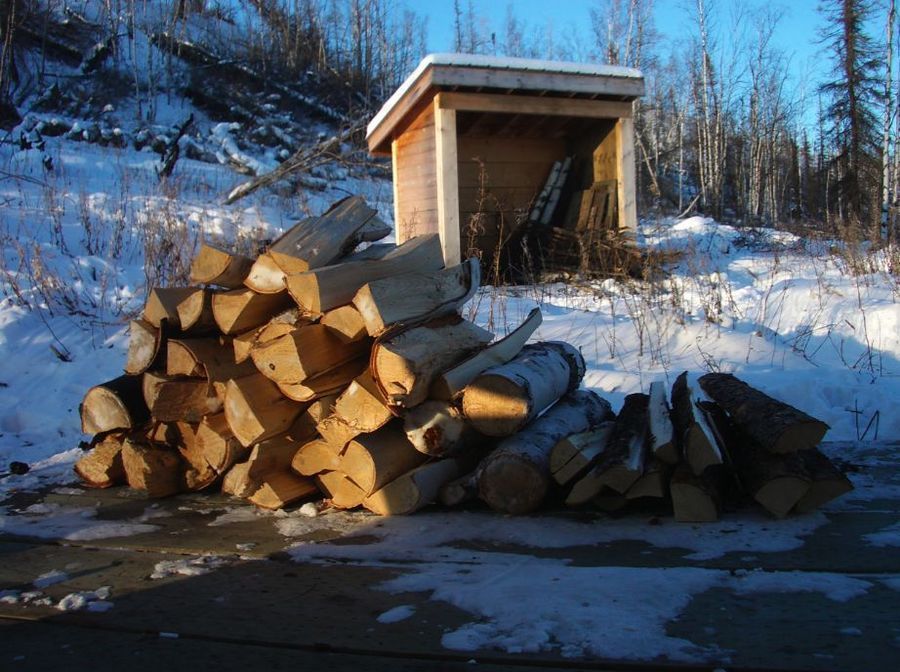What’s your preference? Spruce or birch? When it comes to heating our homes and cabins this winter, this question is one of many about the methods we use. Many people heat their homes with oil, as natural gas is not available north of the Matanuska Valley in Alaska. To supplement that, both financially and environmentally, most of us utilize the local abundance of trees we have right here.
The process of rendering a standing tree to logs burning in our wood stoves takes several steps, as well as a substantial amount of time. Dead trees are ideal, as you don’t have to ‘cure’ them in your yard for a few years prior to burning. The tree has to be sawed down, the branches taken off, and the trunk chopped into sections (aka ‘bucked up’). Then you haul those sections home, and split the logs. Colder days are ideal, as the grains of the wood split more easily then. A sharp big ax and maul are very useful here, as well as having a healthy chunk of confidence. I never seem to split my logs perfectly on the first swing, and end up grabbing the maul a lot. I get particularly befuddled by knots in the wood, which are basically scars from when old branches fell off. One of these days I’ll be a regular Paul Bunyan, I swear.
My naturalist’s sense of wonder is still active while splitting the logs. Inside, I find several grubs, which have bored extensive networks through the logs. How is it that I can hardly get a heavy ax through the logs, with all the help of physics and a young back on my side, while a grub the size of my fingernail can? Seeing these little guys doesn’t exactly make me jump for joy, however. They are reminiscent of the recent explosion of spruce bark beetles in south central Alaska, which has left vast swaths of boreal forest dead or dying. The incidences of wildfires have escalated due to the abundance of dry timber. Similar problems are occurring in the lodge pole pine forests of states such as Montana. Although the direct reason for their explosion is speculative, it probably correlates with global climate change and warming winter temperatures.
But for now I’ll do my part to reduce carbon emissions, and keep my cabin cool. 50 degrees is the baseline temperature while I’m out for the day, but I throw some wood in the fireplace while I’m home and heat it up to a comfy 70 or so. Norwegians have a word for a quaint, rustic but cozy atmosphere like the one generated by a wood stove. The word is “koselig,” and though it has no direct English translation, embodies the essence of a warm winter retreat. We hope you are all having a koselig winter, as we think about the summer to come and the seasons which lie ahead of us.




